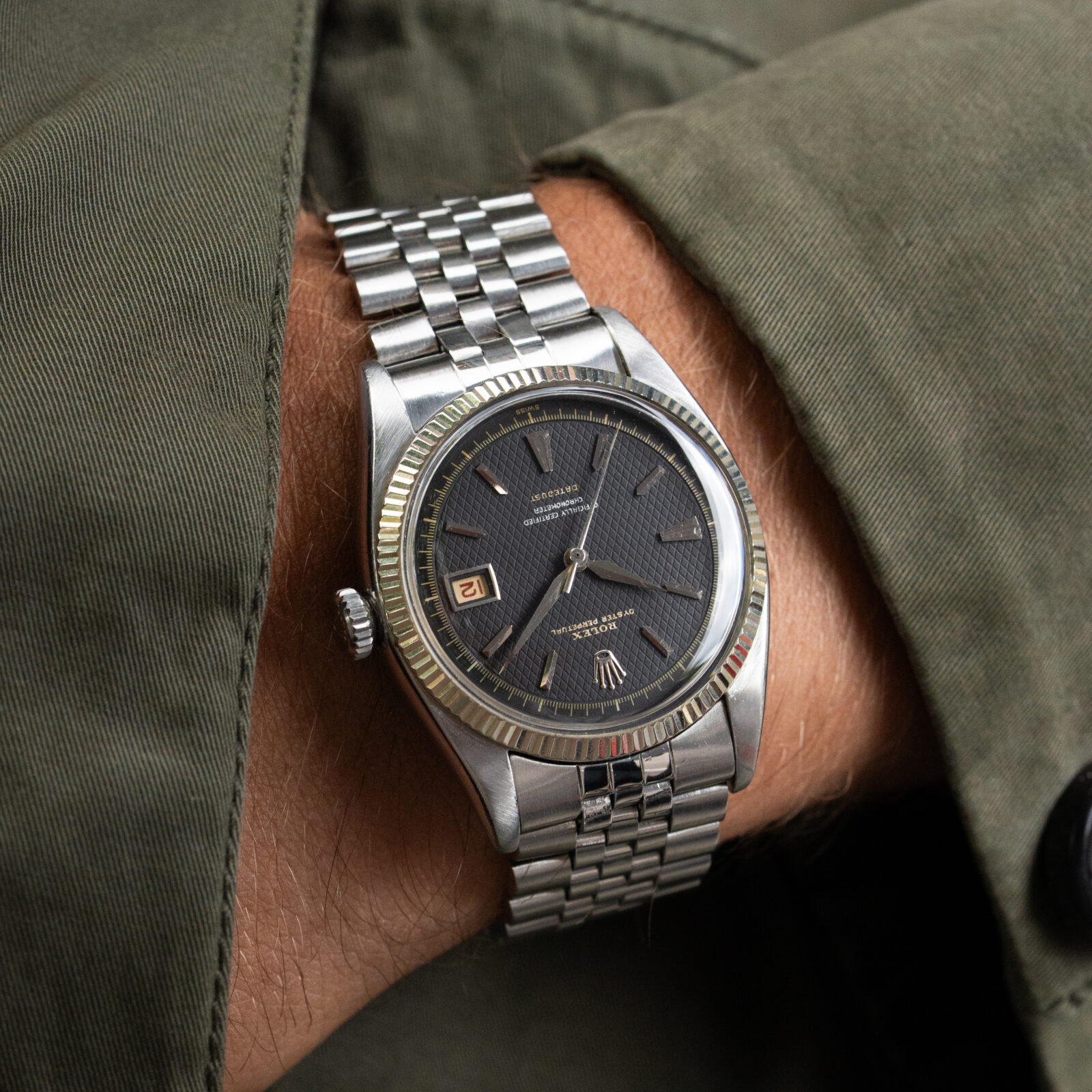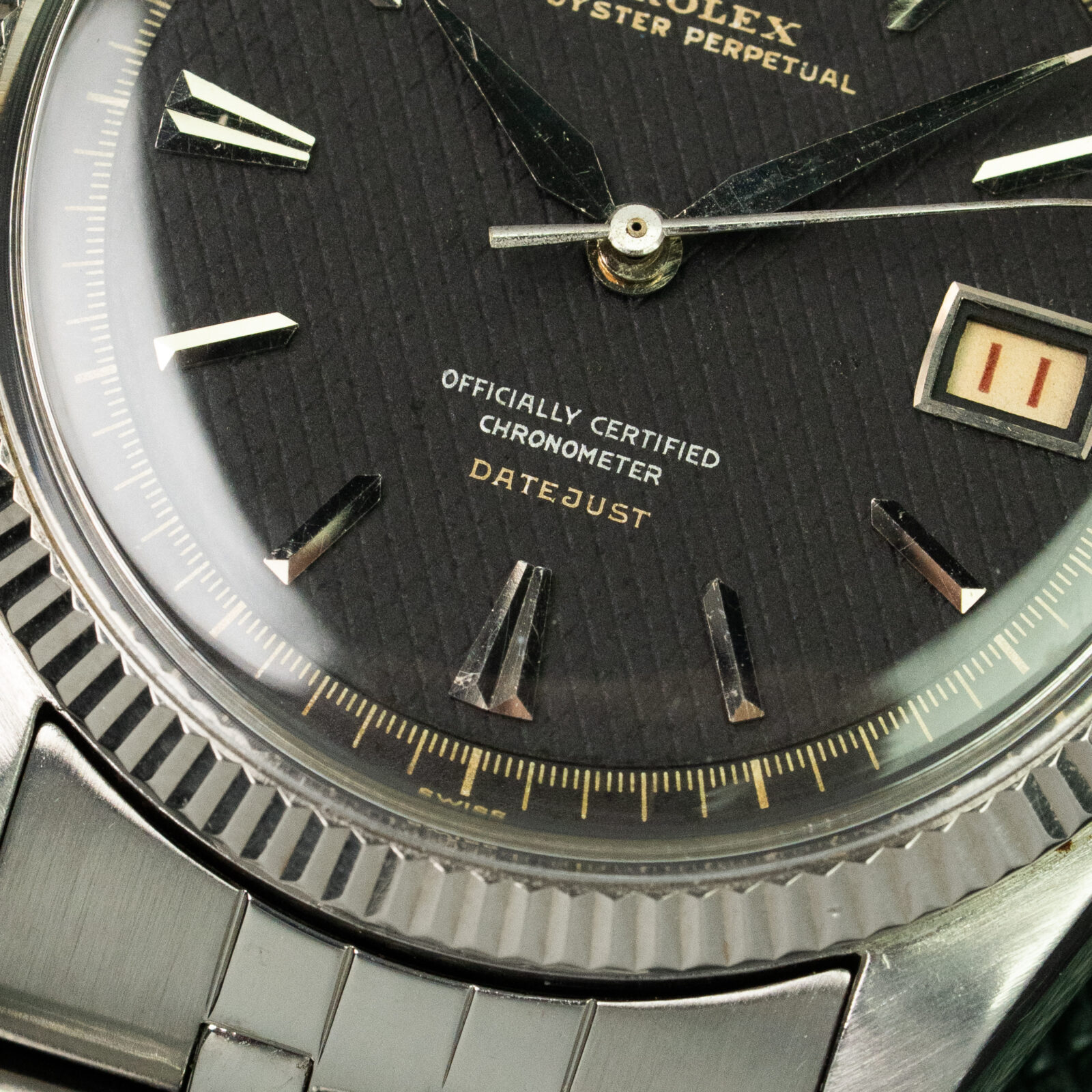

6305-1
Striking lay-out on this waffle dial -with silver and gold printing- uniquely displaying the model name at 6!
The steel Rolex Datejust is, for many, the definition of a perfect “one-watch collection.” Its appeal lies not only in its approachable entry point but also in its versatility, everyday practicality, and timeless design. With countless configurations available, this iconic wristwatch has graced the wrists of people from all walks of life for over 80 years. Unsurprisingly, we’re particularly drawn to the early models. Today, we look back at where it all began; uncovering the groundbreaking beauty of the archetypal steel Datejust.
The earliest steel Datejusts were introduced under two references, differentiated by their bezel finish: the 6304 and the 6305. The 6304, now the rarer of the two, featured a smooth, slightly domed bezel. The 6305, on the other hand, appeared in two distinct series. The first series was fitted with a finely milled white gold bezel -more delicately fluted than those of later 16xx models- earning the nickname “coin-edge.” The 36mm case is perfectly proportioned and, in this example, preserved in immaculate condition and still sporting the original Brevet crown. Due to its domed caseback, the so-called Ovettone sits slightly higher on the wrist. A 20mm lug width connects it to the folded Jubilee bracelet with early and short GF clasp.
One of Rolex’s most recognizable innovations, the “Cyclops” lens, was originally developed for the Datejust to magnify the date aperture. The patent was filed in 1952, just before the introduction of the 6305, making it the first reference to feature the Cyclops from the factory. However, for this piece, we opted for a domed crystal, offering an unobstructed view of what truly matters: the dial.
This example features the most coveted type of dial, distinguished by its textured honeycomb (or “waffle”) pattern rather than a smooth surface. These dials are widely regarded as the pinnacle of steel Datejust design. Produced in either white or the rarer black version seen here, they also vary subtly in typographic layout and printing style. The outer minute track features a gentle “pie-pan” edge -softer than those of later 16xx models- and is divided into five segments per minute.
The dial is signed “Swiss” at six o’clock, following the earlier “Swiss Made” signature used on previous generations. In the 1950s, before the introduction of the familiar “SCOC” marking, Datejust dials carried the inscription “Officially Certified Chronometer” printed in silver. Usually we find the the model name at the 12 o'clock position, under "Rolex Oyster Perpetual" but here it is positioned just above the 6 o'clock marker. A super rare lay-out we have only encountered once before. This printing, as well as the minute track, is yellowish; providing spectacular elegance.
The overall condition of the dial is exceptional: the contrasting print remains vivid, and the design perfectly balanced. Pointed baton hour markers are complemented by thicker indices at six and nine, counterbalancing the framed date window at three. The leaf-style hands and dial are free from luminous material, maintaining a clean, elegant aesthetic.
To many, the steel Datejust represents the most common of luxury watches. Yet, look a little deeper, and you’ll uncover a captivating niche filled with historically significant and highly collectible models. Tracing its origins reveals why this watch became such an enduring symbol; and why Hans Wilsdorf himself wore a Rolex Datejust.







